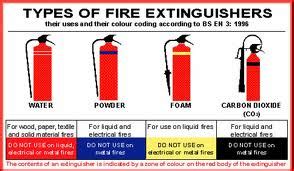How to Put Out an Electrical Fire: A Guide to Safety
Electrical fires are terrifying, but knowing how to react quickly and safely can significantly reduce damage and prevent injury. This guide provides essential steps to extinguish an electrical fire and crucial safety precautions. Never attempt to fight an electrical fire if you're unsure of your ability to handle the situation safely. Your safety is paramount.
Understanding Electrical Fire Hazards
Before diving into extinguishing methods, it's crucial to understand the unique dangers posed by electrical fires. Unlike other types of fires, electrical fires can reignite easily and pose a serious risk of electric shock. Water is absolutely not recommended as a first response due to the high risk of electrocution.
Common Causes of Electrical Fires
- Overloaded circuits: Too many appliances running simultaneously can overload circuits, leading to overheating and fire.
- Faulty wiring: Damaged or improperly installed wiring is a major culprit in electrical fires.
- Appliance malfunctions: Defective appliances, such as toasters or space heaters, can spark and ignite nearby materials.
- Lightning strikes: A direct lightning strike to a building can cause significant electrical damage and fire.
How to Respond to an Electrical Fire: A Step-by-Step Guide
Your primary concern is safety. Evacuate the building immediately if the fire is spreading or if you feel unsafe.
1. Call Emergency Services: Dial your local emergency number (911 in the US) immediately. Provide your location and a clear description of the situation. This is the most important step.
2. Evacuate: Get everyone out of the building and to a safe distance. Once you're outside, ensure everyone is accounted for. Never re-enter a building with an active electrical fire.
3. Turn Off Power: If it's safe to do so and the fire is small and contained, try to turn off the power at the main breaker box. Only attempt this if you are comfortable and confident in your ability to do so safely. Do not risk your safety. If you're unsure, leave it to the professionals.
Extinguishing Small, Contained Electrical Fires
Only attempt to extinguish a small, contained electrical fire if you feel confident and safe doing so. Otherwise, leave it to the professionals.
If the fire is small and contained, consider using these methods:
- Class C Fire Extinguisher: A Class C fire extinguisher is specifically designed for electrical fires. Learn how to operate it properly before needing to use it. Aim at the base of the flames.
- Baking Soda: For very small, contained fires (like a small appliance fire), you can try smothering the flames with baking soda. However, this is less effective than a Class C extinguisher. Never use water.
Preventing Electrical Fires
Prevention is key to avoiding electrical fires. Here are some crucial preventative measures:
- Regular Electrical Inspections: Have a qualified electrician inspect your wiring regularly to identify and correct any potential hazards.
- Avoid Overloading Circuits: Don't plug too many appliances into a single outlet or circuit.
- Use Surge Protectors: Protect your appliances from power surges that can cause damage and fire.
- Maintain Appliances: Regularly inspect and maintain your appliances to identify and address any potential issues.
- Replace Damaged Cords: Immediately replace any frayed or damaged electrical cords.
When to Call a Professional
Always call a professional for anything beyond your ability to safely handle. This includes but isn't limited to:
- Large or Spreading Fires: Never attempt to fight a large or rapidly spreading electrical fire.
- Uncertainty or Hesitation: If you are unsure about any aspect of handling the fire, err on the side of caution and call emergency services.
- After the Fire is Extinguished: After extinguishing a small fire, it's advisable to call an electrician to inspect for any residual damage or hidden risks.
This guide provides information for educational purposes only. Always prioritize safety and seek professional assistance when necessary. Your safety and the safety of others is the utmost priority.
